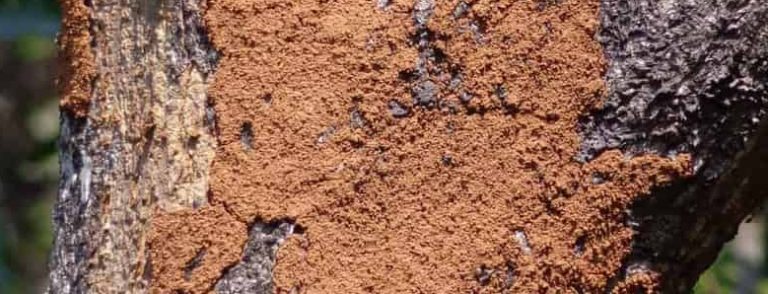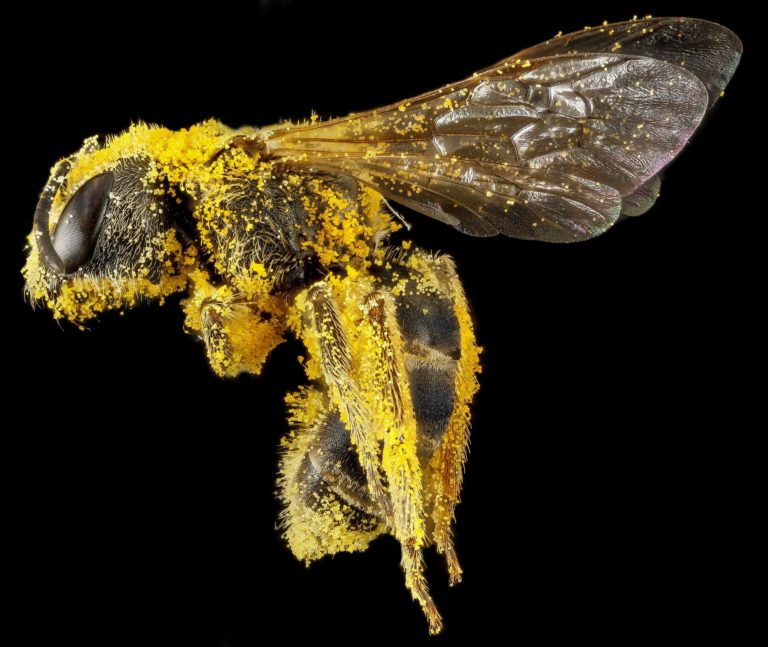How To Tell If Your dog Has Fleas – 5 Signs
How do I know if my dog has fleas?
Well, the vet says it’s if you notice your dog scratching, shaking their head, biting themselves, and then scratching some more. But how do you know for sure?
In this article, I’ll tackle this question: how to tell if your dog has fleas?
- Dogs with fleas will usually have at least one of the following: excessive scratching or licking; black specks around the base of their tail, head, ears, or paws; an irritated red skin rash.
If your dog is exhibiting any of these symptoms then it may very well have fleas.
[amazon bestseller=”Best Flea Killers” items=”2″ template=”table”]Let’s get into the details!
Read Also: The 6 Signs that Cat Has Fleas
What are Dog Fleas? Comparison with Cats Fleas?
Dog fleas are ectoparasites – they inhabit and live outside their host’s body on the fur. They’re roughly 1/8 inch long, thin, reddish-brown.
Are dog fleas visible to the human eye?
It can be difficult to spot dog fleas on a dog’s fur (they’re 1/8 inch long) with the human eye. Though it may seem easier on light-colored fur, or if you use a microscope or magnifying glass.
- Dogs frequently have parasites. One type, known as dog fleas, lives, feeds, and reproducing on the blood of its hosts.
If you’re confused between cat fleas and dog fleas, you might want to check our guide on cat fleas vs dog fleas.
In summary:
Cat fleas and dog fleas species are different and they mainly inhabit and live on cats and dogs respectively.
- But without the use of laboratory equipment, it can be difficult to tell these two species apart.
Since Cat fleas suck blood from many mammals (plus on dogs too), they’re a more prevalent species compared to dog fleas.
Do dog fleas bite humans? Generally no; but it can happen if your dog has a massive infestation or if you have a pet that is not house-trained to mainly keep to its dog bed.
If your dog has signs of being infested with parasites, there are medications available for the treatment of canine flea infections from veterinarians or online retailers like Amazon.
How Did My Indoor Dog Get Fleas?
Maybe you’ve cleaned up the dog and flea-treated the yard, but they’re still scratching – a sign that it still has fleas.
Well, dogs will pick up fleas in different ways. Your dog could have picked up fleas from:
- Walking on dirt or grass with an infested animal nearby.
- Sharing a bed, carpet, or furniture that has flea eggs near the surface of it.
- Licking and interacting with other dogs or flea-infested animals such as rodents, ferrets, squirrels, opossums, and raccoons.
- Going to a flea-infested place such as the dog park or grooming salon.
- Licking their paws from contact with flea-infested items in your home, like carpets, bedding, furniture fabric, carpeting,
Dogs might also be attacked by fleas outside the home, on the street, in the backyard, or even on the porch.
Also, the fleas can find their way onto your dog from your trip abroad – through lagguage, and if they are left untreated then pets will become infested with them in no time at all.
Related: How to Treat Fleas in the Yard
What Are The Signs That My Dog Has Fleas?
Fleas are scary tiny bloodthirsty bugs that will literally drink more than their weight in blood. They’ll be a life threat (after causing anemia) to your sickly/ old dogs and even puppies.
Fleas will leave tiny bites all over your dog’s body that are hard to see and also cause restlessness and allergic reactions.
This is a list of the signs you should look out for to know that your dog has a flea infestation.
Sign 1 – Restlessness in the Dog
The constant flea bites and possible allergic reactions from the parasite’s saliva often cause dogs to appear irritated and restless.
If the dog is flea-infested, it will likely keep licking, biting, and scratching itself in order to relieve itself of the discomfort.
Signs that show the dog has been scratching itself to relieve skin irritation will typically have hair loss in patches, composed of bald spots with “dirt” underneath them, usually found at a dog’s lower back end.
This type of infestation can make your pet start to smell bad as well because it won’t be able to clean itself properly due to all those irritating bugs biting away.
- This means you should take precautions such as using flea shampoo or sprays to get rid of these bloodthirsty pests before they do any more damage!
A person might notice the dog chewing and scratching the body area in an effort to ease that discomfort from the fleas.
Sign 2 – Flea Dirt and Flea Eggs
Inspect the dog’s fur and skin – if you notice specks like black pepper (finely ground), then this is flea “dirt” (flea droppings) that denotes a flea infestation.
When you see tiny black dots on the dog or on your carpet, it’s probably not pepper. It could be flea dirt or eggs.
Dog fleas lay eggs (20 – 50 eggs daily) and produce this waste while feeding. Flea eggs are white and oval-shaped.
- To confirm if it’s flea dirt use some white paper towel to drop the dirt collected from the dog’s grooming
- Next, sprinkle that dirt with some water and check its color change. If anything like red or reddish-brown emerges then the dirt is flea droppings or flea dirt.
Sign 3 – Anemia – Pale Gums
Fleas will suck massive amounts of blood from the canines (dogs) and this could lead to anemia in the puppies or the sickly dogs.
As fleas are heavy blook suckers, when they’re in an area with more than just a couple of them, your dog’s blood can get dangerously low.
The gums are usually pale in appearance and the dog will have a hard time breathing due to low levels of hemoglobin.
Anemia is when there are not enough red blood cells. The hemoglobin in blood is a protein molecule inside the red blood cells that moves oxygen to all parts of your body.
There are three causes of anemia
- Blood loss
- Destruction of red blood cells also called hemolytic anemia
- Insufficient production of red blood cells also called aplastic anemia
Dogs mainly get anemia from blood loss. The symptoms of anemia in your dog can include
- Weakness
- Elevated heart rate and Rapid breathing
- Pale mucous membranes which is usually the gum color.
- Sometimes the tongue can become pale pink to white
- A loss of appetite
Sign 4 – Hair Loss and Allergic Reactions
Dogs that are allergic to the flea’s saliva may experience severe itching, hair loss, and red sores.
Allergic dermatitis caused by flea bites will mainly develop among older dogs or younger puppies.
The flea allergies are found on the dog’s hindquarters – those may be skin rashes or hair loss patches found on the dog’s tail or its back legs.
- The allergic reaction to flea saliva is hypersensitivity and can be seen in many dogs.
Signs that your dog has fleas include sores caused by scratching as well as excessive licking at these areas mentioned above.
- Dogs who have been bitten by fleas may start itching excessively around their rear end while other symptoms for this condition are redness about the anus region and hair loss around the genital area.
Sign 5 – Tapeworms in the Dog Feces
Tapeworms may appear in your dog’s fecal matter as tiny white segments or rice-like pieces.
Dogs get the tapeworms after swallowing fleas that have tapeworm eggs in their feces.
The worst type is a “dogal” tapeworm that enters through an infected flea bite on its skin then travels to where it becomes embedded within muscle tissue next to his spinal column.
Fleas can carry tapeworms, which your dog may ingest as it scratches its itchy skin.
The tapeworms will grow in the dog’s intestines, shedding tapeworm eggs into the dog’s feces.
- If you see little white droppings that look like rice then you can be certain that there is a problem with this type of parasite too.
Dog owners should also watch out for red bumps on the skin (called dermatitis).
Use that Flea Comb to Catch Fleas
Many pet owners have had a stressful experience with fleas and it’s not the feeling you want to repeat! Use your flea comb to catch fleas!
Dog fleas can be difficult to detect.
Start at the head of your dog and run a flea comb through the hair in the direction of hair growth, then dump them into soapy water.
- You can find flea combs quickly and easily at your local pet store.
Fleas like to hide in a variety of locations, including the base of the tail, the base of the ear, around the neck and groin area.
Flea combs can be used to catch fleas and prevent them from jumping onto your furniture or home.
Over the past few days, my roommate’s dog has been scratching a lot. I bought some flea medicine today – just in case this is an issue.
- But while waiting for it to arrive, I wanted to see if there were any fleas on him first.
- We did not have a lint brush or comb lying around, so instead of washing his fur with shampoo and then inspecting him like vet advised we foamed his coat up first and then combed an area of skin followed by another area of skin nearby.
- Our goal was to rinse him repeatedly throughout until no more soap was coming out and also catch any flea beings that were hitching a ride on our pup!
- We got them!
Conclusion
In summary, on how to tell if your dog has fleas; check the following signs.
- Signs of scratching or biting at themselves constantly
- You find flea dirt around your pup’s paws or fur
- They start licking and chewing excessively
- Extremely short hair all over, especially near ears and eyes
- Pale skin in certain areas from lack of circulation during times when it was warm enough
We hope that this post was helpful and will help you determine if your dog has fleas!







